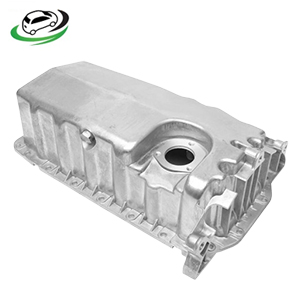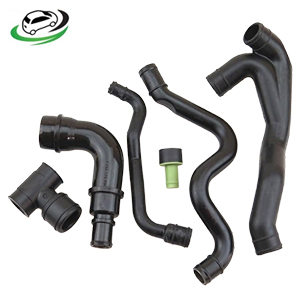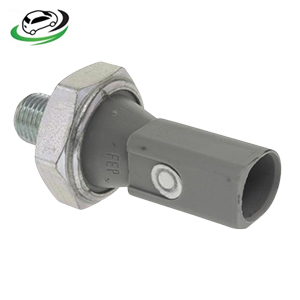Get Engine Oil Pressure Switch AUDI Q7 TDI (4L) w/ 3.0L V6 CATA Engine (225HP) (2009-2012) / VW Touareg TDI (7L) w/ CATA 225HP 3.0L V6 (2009-2010) / 038919081B
The engine oil pressure switch, also known as an oil pressure sensor or sender, is a crucial component of an internal combustion engine. Its primary function is to monitor the engine’s oil pressure and communicate this information to the vehicle’s dashboard, alerting the driver to potential issues. Understanding the role, functionality, and potential issues associated with the oil pressure switch is vital for maintaining engine health and preventing costly damage.
1. Role and Importance
The engine oil pressure switch plays a critical role in ensuring that the engine receives adequate lubrication. Engine oil lubricates moving parts, reduces friction, and helps dissipate heat. Without sufficient oil pressure, these functions are compromised, leading to increased wear and potential engine failure.
The oil pressure switch continuously monitors the oil pressure within the engine. When the pressure drops below a predetermined level, the switch triggers a warning light on the dashboard. This warning light is often the first indication to the driver that there is a problem with the engine’s lubrication system. Ignoring this warning can lead to severe engine damage, as insufficient oil pressure can cause moving parts to grind against each other, leading to excessive wear, overheating, and ultimately, engine failure.
2. Structure and Functionality
The oil pressure switch is typically located near the oil filter or directly on the engine block. It is a small, yet robust device designed to withstand the harsh conditions of the engine environment, including high temperatures, vibrations, and exposure to oil.
2.1. Basic Components
- Switch Housing: The external casing that protects the internal components from environmental factors. It is usually made of metal or high-temperature-resistant plastic.
- Pressure Sensing Element: This is the core component that detects the oil pressure. It is often a diaphragm or a spring-loaded piston that reacts to changes in pressure.
- Electrical Contacts: When the pressure sensing element detects a drop in oil pressure, it causes a change in the position of the electrical contacts, which then triggers the warning light on the dashboard.
- Connector: The switch is connected to the vehicle’s electrical system through a connector, which allows it to send signals to the dashboard.
2.2. How It Works
The engine oil pressure switch operates by detecting the oil pressure in the engine’s lubrication system. When the engine is running, the oil pump circulates oil through the engine’s various channels and components, generating pressure. The pressure sensing element within the switch reacts to this pressure.
- Normal Operation: When the oil pressure is within the normal range, the switch remains open, and no signal is sent to the warning light. The driver assumes the oil pressure is adequate, and the engine continues to operate normally.
- Low Oil Pressure: If the oil pressure drops below a critical threshold, the pressure sensing element moves, causing the electrical contacts to close. This action completes the circuit, sending a signal to the dashboard warning light, alerting the driver to low oil pressure.
3. Types of Oil Pressure Switches
There are several types of oil pressure switches, each designed to meet the specific needs of different engines and vehicles. The main types include:
- Simple On/Off Switch: This is the most basic type, which simply triggers a warning light when oil pressure drops below a certain level.
- Variable Resistance Sensor: This type provides more detailed information by varying the resistance in response to changes in oil pressure. It allows the vehicle’s onboard computer to monitor oil pressure more precisely and display the actual pressure level on a gauge.
- Dual-Function Switch: Some oil pressure switches serve dual functions. In addition to monitoring oil pressure, they may control other engine functions, such as the fuel pump or ignition system, which may be designed to shut down if oil pressure drops too low to prevent engine damage.
4. Common Issues and Symptoms
The oil pressure switch, like any other engine component, can develop issues over time. Recognizing the symptoms of a faulty oil pressure switch is important for timely diagnosis and repair.
- False Oil Pressure Warning: One of the most common symptoms of a faulty oil pressure switch is the oil pressure warning light illuminating when there is no actual problem with the oil pressure. This can be caused by a malfunctioning switch that incorrectly detects low pressure.
- No Warning Light When Pressure is Low: Conversely, if the oil pressure switch fails, it may not trigger the warning light when oil pressure drops dangerously low. This is particularly dangerous as the driver may be unaware of a serious problem until it’s too late.
- Oil Leaks: The oil pressure switch is sealed to prevent oil from leaking out of the engine. Over time, the seals may wear out, leading to oil leaks. This can cause the switch to malfunction and may also contribute to a loss of oil, further exacerbating low oil pressure issues.
- Intermittent Warning Light: If the oil pressure warning light flickers on and off, it could indicate a loose connection or a failing oil pressure switch. This can be challenging to diagnose, as the warning light may not stay on long enough to trigger a diagnostic trouble code.
5. Diagnosis and Replacement
Diagnosing a faulty oil pressure switch typically involves a combination of visual inspection and electronic testing.
- Visual Inspection: The first step is to inspect the switch for any signs of physical damage, such as oil leaks or corrosion. The connector should also be checked for loose or damaged wires.
- Electronic Testing: A multimeter can be used to test the electrical continuity of the switch. If the switch is functioning correctly, it should show an open circuit when the engine is off and a closed circuit when the oil pressure is low.
- Oil Pressure Gauge: To confirm that the oil pressure is within the normal range, a mechanic may attach an external oil pressure gauge to the engine. If the gauge reads normal pressure while the warning light is on, it’s likely that the oil pressure switch is faulty.
Replacement Process
Replacing an oil pressure switch is a relatively straightforward task that can be performed by a mechanic or an experienced DIY enthusiast. Here’s a general overview of the process:
- Locate the Switch: The oil pressure switch is usually found near the oil filter or directly on the engine block. Refer to the vehicle’s service manual for the exact location.
- Disconnect the Battery: Before starting the replacement, disconnect the vehicle’s battery to avoid any accidental electrical short circuits.
- Remove the Old Switch: Using a wrench, carefully unscrew the old oil pressure switch from its mounting point. Be prepared for some oil to leak out when the switch is removed.
- Install the New Switch: Apply a small amount of thread sealant to the new switch to prevent oil leaks. Screw the new switch into place and tighten it to the manufacturer’s specified torque.
- Reconnect the Electrical Connector: Reattach the connector to the new oil pressure switch.
- Test the New Switch: Reconnect the battery and start the engine. Monitor the oil pressure warning light to ensure it functions correctly.
6. Advances in Oil Pressure Switch Technology
Modern advancements in automotive technology have led to the development of more sophisticated oil pressure switches. Some of the latest switches are integrated into the vehicle’s electronic control unit (ECU), providing real-time data on oil pressure and other engine parameters. These advanced systems allow for more precise monitoring and can even trigger preventive actions, such as reducing engine power, to protect the engine from damage in the event of low oil pressure.
Follow us on Facebook for more parts.



